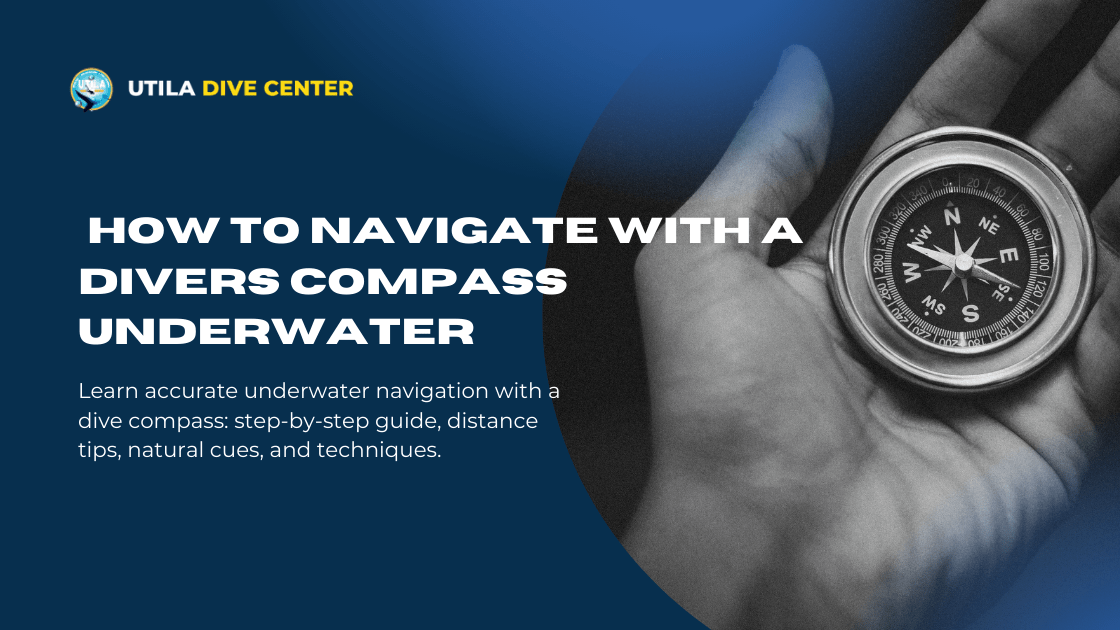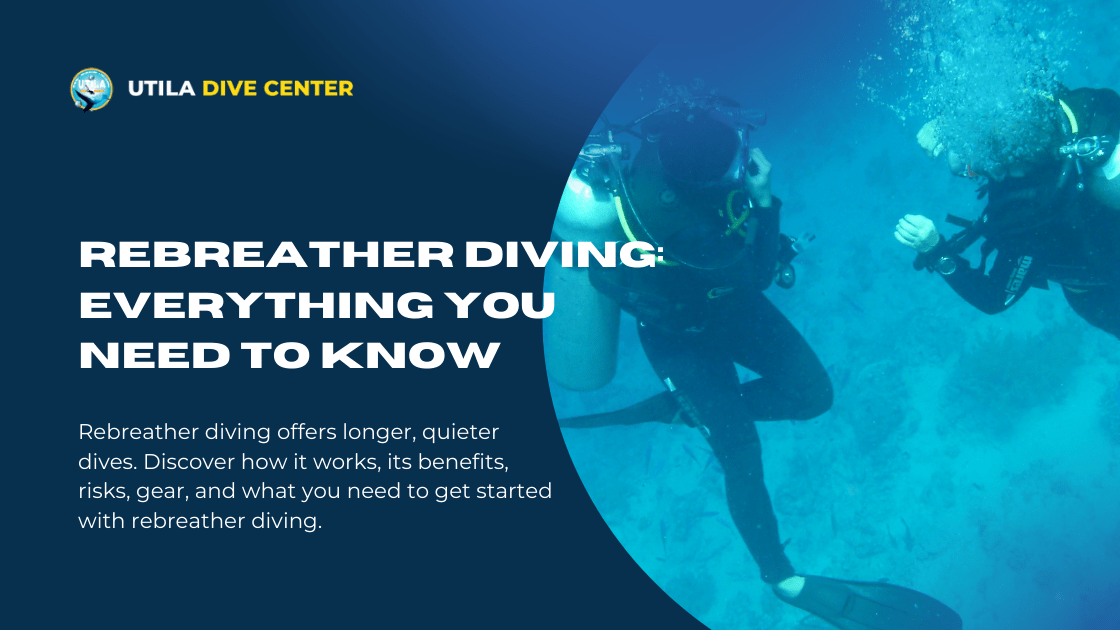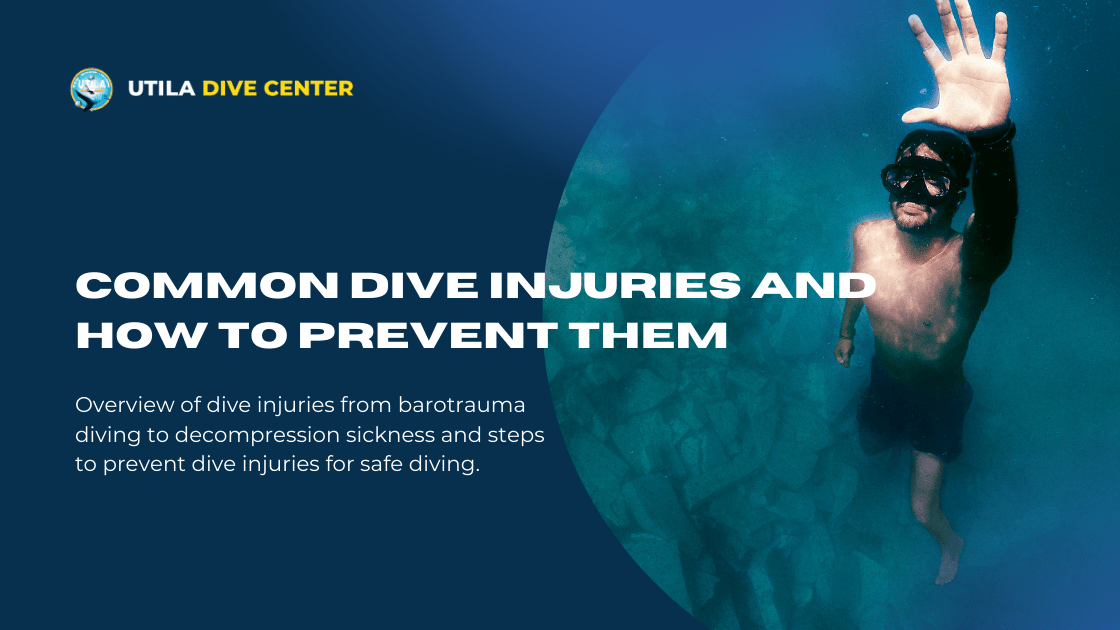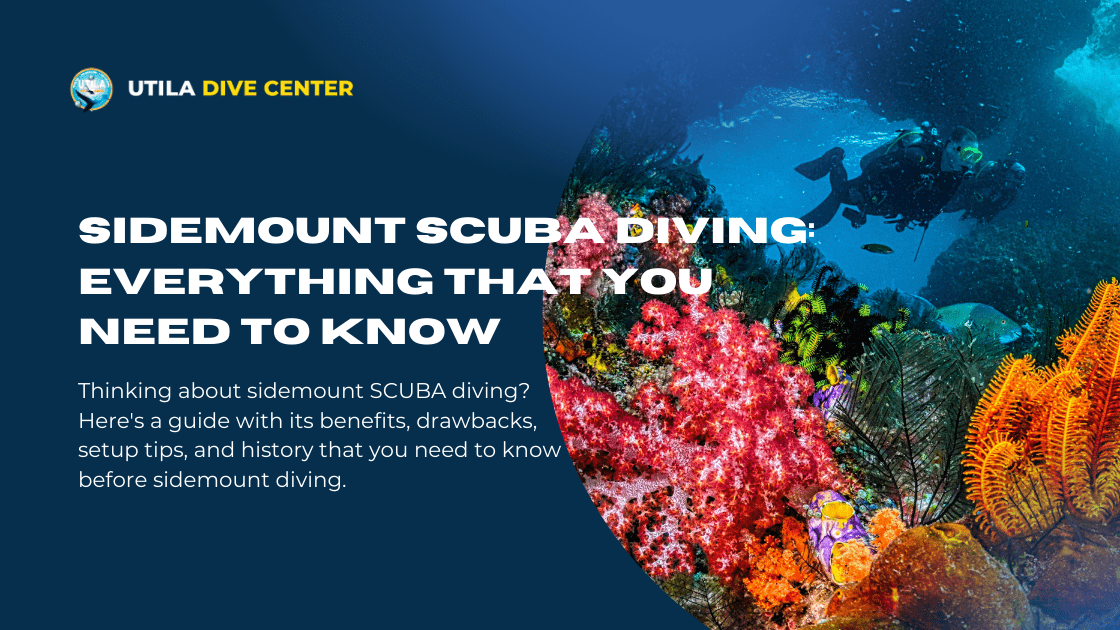
How to Navigate With a Divers Compass Underwater
How to Navigate With a Divers Compass Underwater
By: Manny Lagos | Date: 2025-09-29T10:18:33.883Z
Ever finished a dive thinking, "How on earth did we end up back at the boat so easily?" Chances are, your buddy (or your experienced instructor at Utila Dive Centre) was quietly following the needle on an underwater compass.
Learning how to use that tiny instrument turns "aimlessly wandering around underwater" into "diving straight to the reef wall, and coming back up without any hassle”.
Ready to add yet another epic dive skill to your toolkit? Let's begin.
By the end of this blog, you'll understand your underwater compass inside out and be ready to use it confidently on every dive from here on out.
Why Underwater Compass Navigation Is Essential
Picture this: crystal-clear Caribbean water, a friendly turtle swimming by...and a sneaky current pushing you away from the reef. What will you do? With no street signs in the underwater world, your dive compass is literally your best buddy.
Underwater compass navigation is essential for:
- Longer, safer dives– less gas wasted looking for the exit.
- Stress-free explorations– focus on the beautiful marine life instead of thinking about "where's north?"
- Professional journey– if you're working toward becoming a Divemaster or Instructor, solid navigation skills definitely set you apart.
At Utila Dive Centre we start sharpening these skills in Open Water, hone them in Advanced, and make them almost instinctive during the Divemaster training. By the time you’re done, compass navigation will feel like second nature (just like checking your air or adjusting your buoyancy).
Understanding Your Dive Compass
Now, before you can navigate like a pro, you need to know what's happening inside that plastic body.
Component Breakdown
- Needle & Lubber Line: The magnetic needle aligns with Earth's field, and the lubber line shows the direction you're actually swimming in.
- Rotating Bezel: Mark your heading (bearing) and back-bearing with those 30-degree click stops.
- Side Window: Gives you an alternate view for low-profile swimming.
- Index Marks: These are little reference dots on the bezel, you have to line them up with the lubber line to "lock" a direction.
Compass Styles & Mounts
- Wrist mount: It’s like a chunky watch, perfect for quick glances while kicking and swimming.
- Console mount: When paired with your pressure gauge, this one is great for rental gear and tech rigs.
- Retractable clip: Handy for photographers diving with a camera, you just have to snap it to a D-ring and extend it when needed.
Go with whatever feels right. At UDC, we believe if it’s comfortable, it will keep you on course.
Magnetic vs. True North Explained
Earth's geographic (true) north and magnetic north aren't identical, and the gap between them (declination) changes by location. In the Bay Islands, it's only a few degrees, so for recreational dives here, your SCUBA diving compass readings usually stay spot-on. However, if you’re going for polar expeditions, you'll need to learn how to add or subtract that declination. Just another reason why navigation never gets boring!
Pre-Dive Preparation & Compass Setup
- Check for bubbles or leaks – A bubble inside the compass means the fluid expanded, hence accuracy drops. Swap it out.
- Test freedom of the card – Tilt it 30° each way to check if the needle swings freely.
- Plan your route – On the boat, study the site map properly. Plot bearings to each landmark and back to the exit point, you’ll thank us later.
- Set the first bearing – Rotate the bezel so the index aligns with your first heading before you descend. That's one less task at depth.
Bonus tip: Check the dive conditions before you dive in and face the reef and mentally rehearse the route. Remember: muscle memory starts topside.
Step-by-Step Compass Navigation Guide
Taking a Bearing
- Hold the compass level in front of you – arm extended, elbows tucked.
- Turn yourself until the lubber line points where you want to go (like that coral reef up ahead).
- Spin the bezel until its "N" (north) lines up with the needle. Voila, bearing locked!
Swimming on Course
- Keep the needle centred between the bezel's index marks (aka “red in the shed”).
- Don’t forget to look up! Use your compass AND your surroundings (more on natural cues later).
Setting a Back Bearing
You explored and snapped photos, now it’s time to head home. Just rotate the bezel 180° so the south arrow frames the needle. Swim until it lines up again, and you’ll follow your kick-cycles right back to where you started.
Surface & Map Reorientation
Pop up, scan your landmarks, and check your slate. If something’s changed (like a cloud blocking your reference point), just adjust the bezel before diving back down.
Measuring Distance Accurately
A bearing alone won't tell you WHEN to turn. That’s where distance comes in. Here are two tried-and-true methods we teach:
- Kick-cycles – Count every fin kick with one leg. If it takes you 30 kicks to cover 20 m in confined water, log it. On your next dive, 60 kicks get you about 40 m.
- Time – Note how long it takes to swim 20 m at a normal pace (say, 1 minute). Now use that along with your dive computer for depth/time awareness.
Pro trick: Use both. If at kick no.45 you've already hit one minute, currents are working against you. Adjust your angle or give yourself an extra breath or two before turning.
Combining Compass & Navigation Tactics
Even the best underwater compass works better when you pair it with some smart backup cues:
- Natural navigation – Use the sun’s angle, surge direction, sand ripples, or distinctive coral heads to guide you between compass checks.
- Kick out, arc back – Say you head 40 kicks north to check out a barrel sponge. Then turn 90° right for 20 kicks, and again for another 40 kicks, this is known as the classic square search pattern.
- Dive compass navigation & team roles – One diver handles direction, and the other monitors depth and time. Swap roles on the way back to keep both skill sets on point.
Using cues like these doesn’t just reduce your task load, it also allows you to focus on what really matters: the magnificent underwater world around you.
Choosing the Right Gear
Lastly, your compass should always match your diving style. Here’s a quick guide to help you pick the one that suits you best:
| Dive Style | Best Compass Choice | Why it works well | | ---------------------------- | ------------------------------------------- | -------------------------------------------------------------- | | Training & Recreational Dive | Wrist-mounted SCUBA diving compass | Very handy, easy to check like a watch while swimming. | | Technical Dive | Low-profile console | Doesn’t clutter the harness and works well with extra gear. | | Photography/Videography Dive | Retractable + side window dive compass | You can clip it away while shooting and read it quickly later. | | Cold water dive | Bungee or large-bezel compass | Easy to grip and rotate, even with the gloves on. |
Conclusion
A dependable underwater compass can turn a good dive into a legendary one. From plotting a straight line to the wreck of the Halliburton to zig-zagging through Utila's dark tunnels, good navigation keeps you calm, confident, and ready for whatever the ocean throws your way.
Remember to:
- Get comfortable with each component.
- Lock in your bearings topside.
- Combine kick-cycle counting with natural clues.
- And most importantly: Practice, practice, practice because every dive is another chance to sharpen your sense of direction.
At Utila Dive Centre we'll help you lock these skills in for life. We’ll do so through hands-on workshops, night dives that rely on pure instrument reading, and fun navigation challenges that (mostly) wrap up with a delicious baleada on shore.
So, grab your fins, clip-on that SCUBA diving compass, and let's point the lubber line toward your next unforgettable dive!
Get in touch with our experts today.
References:
[1] – Blog.padi.com - How to use a compass to navigate underwater
[2] – Greatdivers.com - Underwater navigation: How to use a SCUBA compass
[3] – Scubadiverlife.com - Dive site spotlight: Halliburton Wreck, Utila, Honduras
[4] – Blog.wetsuitwearhouse.com - How to use a dive compass

Rebreather Diving: Everything You Need to Know
Rebreather diving offers longer, quieter dives. Discover how it works, its benefits, risks, gear, and what you need to get started with rebreather diving.
Read more
12 Rules of Scuba Diving All Divers Must Follow
We've curated a list of 12 rules of scuba diving to help you stay safe, protect marine life, and enjoy your underwater adventures with confidence.
Read more
Common Dive Injuries and How to Prevent Them
Overview of dive injuries from barotrauma diving to decompression sickness and steps to prevent dive injuries for safe diving.
Read more
Sidemount SCUBA Diving: Everything That You Need To Know
Thinking about sidemount SCUBA diving? Here's a guide with its benefits, drawbacks, setup tips, and history that you need to know before sidemount diving.
Read more